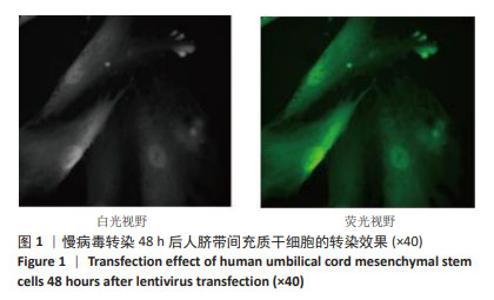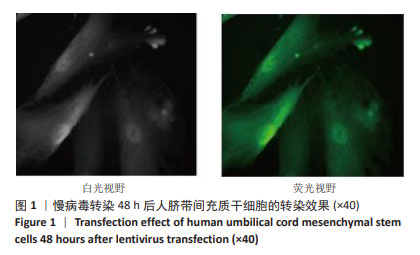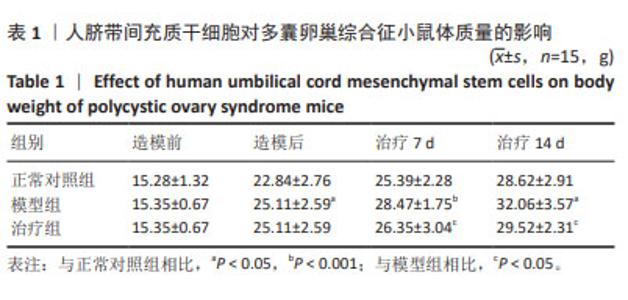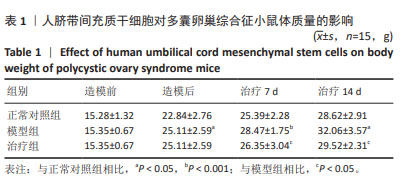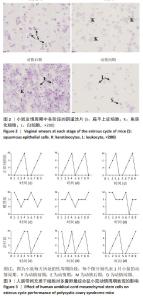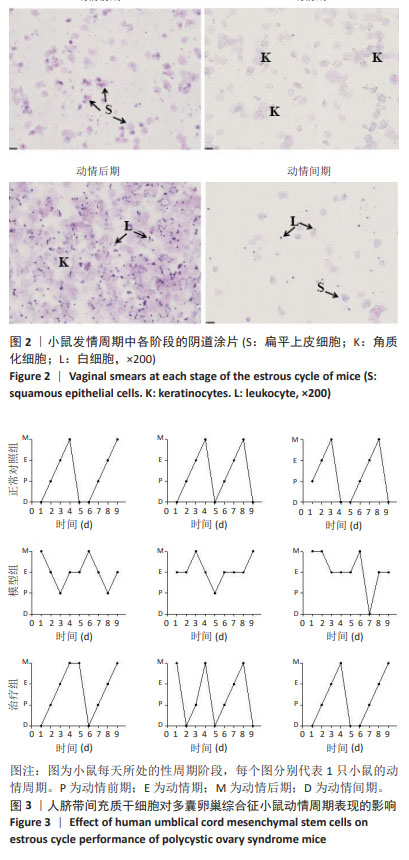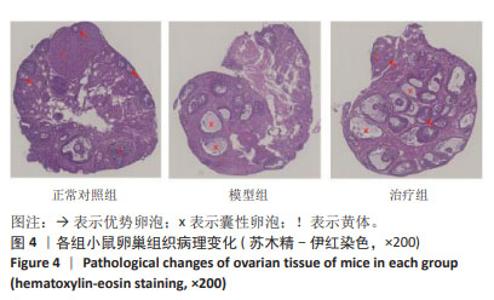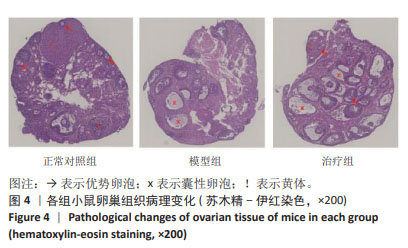Chinese Journal of Tissue Engineering Research ›› 2025, Vol. 29 ›› Issue (25): 5289-5295.doi: 10.12307/2025.520
Previous Articles Next Articles
Expression of Rab27A in ovarian tissue of polycystic ovary syndrome model mice treated with human umbilical cord mesenchymal stem cells
Tao Chenyue1, Chen Shuai2, Wang Liping3, Meng Defang4, Zhou Dongjie5, Zhou Luojing6
- 1School of Public Health, Yangzhou University, Yangzhou 225001, Jiangsu Province, China; 2College of Veterinary Medicine of Yangzhou University, Institute of Comparative Medicine of Yangzhou University, Yangzhou 225009, Jiangsu Province, China; 3Department of Biobank, 4Department of Rheumatology and Immunology, 5Department of Maternity, 6Department of Science and Technology, Northern Jiangsu People’s Hospital Affiliated to Yangzhou University, Yangzhou 225001, Jiangsu Province, China
-
Received:2024-04-10Accepted:2024-05-30Online:2025-09-08Published:2024-12-14 -
Contact:Wang Liping, PhD, Associate researcher, Department of Biobank, Northern Jiangsu People’s Hospital Affiliated to Yangzhou University, Yangzhou 225001, Jiangsu Province, China -
About author:Tao Chenyue, Master candidate, School of Public Health, Yangzhou University, Yangzhou 225001, Jiangsu Province, China -
Supported by:National Natural Science Foundation of China (Youth Project), No. 82001512 (to WLP); Jiangsu Provincial Science and Technology Plan (General Project), No. BK20211118 (to WLP); Jiangsu Provincial Health Commission Medical Research General Project, No. M2021044 (to WLP)
CLC Number:
Cite this article
Tao Chenyue, Chen Shuai, Wang Liping, Meng Defang, Zhou Dongjie, Zhou Luojing. Expression of Rab27A in ovarian tissue of polycystic ovary syndrome model mice treated with human umbilical cord mesenchymal stem cells[J]. Chinese Journal of Tissue Engineering Research, 2025, 29(25): 5289-5295.
share this article
Add to citation manager EndNote|Reference Manager|ProCite|BibTeX|RefWorks
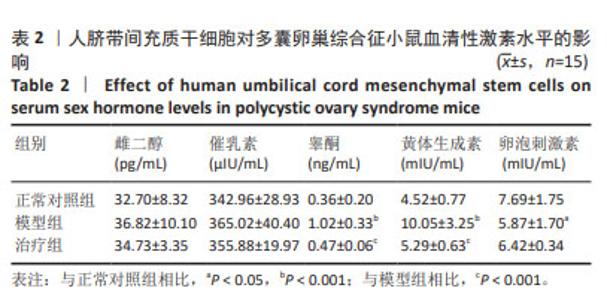
2.5 人脐带间充质干细胞对多囊卵巢综合征小鼠血清性激素分泌的影响 如表2所示,与正常对照组相比,模型组小鼠血清中睾酮和黄体生成素水平分别升高了183.33%和122.35% (P < 0.001),卵泡刺激素水平降低了23.67% (P < 0.05),血清中雌二醇和催乳素虽分别提高了12.6%和6.43%,但差异无显著性意义(P > 0.05)。与模型组相比,治疗组小鼠血清中睾酮和黄体生成素水平分别降低了53.92%和47.36% (P < 0.001),卵泡刺激素水平提高了9.37%,但差异无显著性意义 (P > 0.05),血清中雌二醇和催乳素虽分别降低了5.68%和2.50%,但差异无显著性意义(P > 0.05)。"
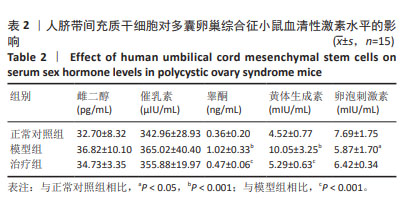
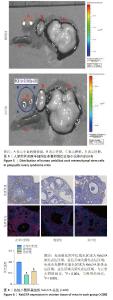
2.7 人脐带间充质干细胞在多囊卵巢综合征小鼠体内的分布 在治疗组小鼠卵巢组织中有少量人脐带间充质干细胞的荧光表达,而在肝、肾、脾脏组织中未观察到明显的荧光信号,见图5。 2.8 人脐带间充质干细胞对小鼠卵巢组织Rab27A表达的影响 见图6。免疫组化结果显示,正常对照组小鼠卵巢内各级卵泡发育良好,卵巢内可见Rab27A在质膜区域呈阳性表达;模型组小鼠卵巢中正常卵泡较少,Rab27A表达水平显著降低;治疗组小鼠卵巢中可见各级卵泡发育,Rab27A呈阳性表达。免疫荧光结果显示,Rab27A主要在质膜区域集中表达,与正常对照组相比,模型组小鼠卵巢Rab27A表达水平显著降低;与模型组相比,治疗组小鼠卵巢Rab27A表达水平明显升高。结果表明,人脐带间充质干细胞治疗后,可以上调多囊卵巢综合征小鼠卵巢中Rab27A的表达水平。"
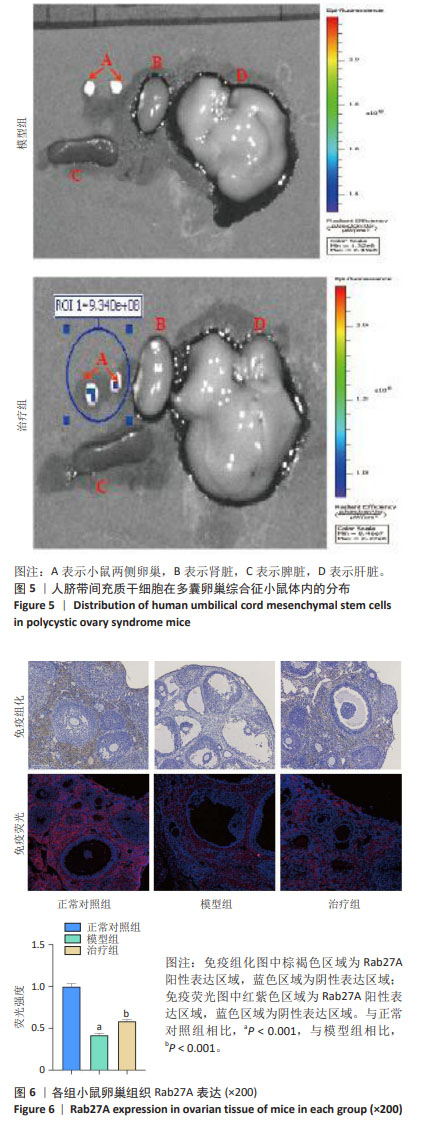
| [1] WALTER K. What Is Polycystic Ovary Syndrome? JAMA. 2022;327(3):294. [2] KUMARIYA S, UBBA V, JHA RK, et al. Autophagy in ovary and polycystic ovary syndrome: role, dispute and future perspective. Autophagy. 2021;17(10):2706-2733. [3] STENER-VICTORIN E, DENG Q. Transmission of Polycystic Ovary Syndrome via Epigenetic Inheritance. Trends Mol Med. 2021;27(8): 723-724. [4] DAPAS M, DUNAIF A. Deconstructing a Syndrome: Genomic Insights Into PCOS Causal Mechanisms and Classification. Endocr Rev. 2022; 43(6):927-965. [5] STENER-VICTORIN E, DENG Q. Epigenetic inheritance of polycystic ovary syndrome - challenges and opportunities for treatment. Nat Rev Endocrinol. 2021;17(9):521-533. [6] MAO Z, LI T, ZHAO H, et al. Identification of epigenetic interactions between microRNA and DNA methylation associated with polycystic ovarian syndrome. J Hum Genet. 2021;66(2):123-137. [7] LIU X, SUN C, ZOU K, et al. Novel PGK1 determines SKP2-dependent AR stability and reprograms granular cell glucose metabolism facilitating ovulation dysfunction. EBioMedicine. 2020;61:103058. [8] FIORENTINO G, CIMADOMO D, INNOCENTI F, et al. Biomechanical forces and signals operating in the ovary during folliculogenesis and their dysregulation: implications for fertility. Hum Reprod Update. 2023;29(1):1-23. [9] KAZEMI M, KIM JY, WAN C, et al. Comparison of dietary and physical activity behaviors in women with and without polycystic ovary syndrome: a systematic review and meta-analysis of 39 471 women. Hum Reprod Update. 2022;28(6):910-955. [10] DAI F, LIU H, HE J, et al. Model construction and drug therapy of primary ovarian insufficiency by ultrasound-guided injection. Stem Cell Res Ther. 2024;15(1):49. [11] KADAM P, NTEMOU E, ONOFRE J, et al. Does co-transplantation of mesenchymal and spermatogonial stem cells improve reproductive efficiency and safety in mice? Stem Cell Res Ther. 2019;10(1):310. [12] SONG N, SCHOLTEMEIJER M, SHAH K. Mesenchymal Stem Cell Immunomodulation: Mechanisms and Therapeutic Potential. Trends Pharmacol Sci. 2020;41(9):653-664. [13] XIANG E, HAN B, ZHANG Q, et al. Human umbilical cord-derived mesenchymal stem cells prevent the progression of early diabetic nephropathy through inhibiting inflammation and fibrosis. Stem Cell Res Ther. 2020;11(1):336. [14] LIU Y, DONG Y, WU X, et al. The assessment of mesenchymal stem cells therapy in acute on chronic liver failure and chronic liver disease: a systematic review and meta-analysis of randomized controlled clinical trials. Stem Cell Res Ther. 2022;13(1):204. [15] MOHAMED SA, SHALABY S, BRAKTA S, et al. Umbilical Cord Blood Mesenchymal Stem Cells as an Infertility Treatment for Chemotherapy Induced Premature Ovarian Insufficiency. Biomedicines. 2019;7(1):7. [16] DING L, YAN G, WANG B, et al. Transplantation of UC-MSCs on collagen scaffold activates follicles in dormant ovaries of POF patients with long history of infertility. Sci China Life Sci. 2018;61(12): 1554-1565. [17] IRFAN F, JAMEEL F, KHAN I, et al. Role of quercetin and rutin in enhancing the therapeutic potential of mesenchymal stem cells for cold induced burn wound. Regen Ther. 2022;21:225-238. [18] LAIOUAR S, BERNS N, BRECH A, et al. RabX1 Organizes a Late Endosomal Compartment that Forms Tubular Connections to Lysosomes Consistent with a “Kiss and Run” Mechanism. Curr Biol. 2020;30(7):1177-1188.e5. [19] HOMMA Y, HIRAGI S, FUKUDA M. Rab family of small GTPases: an updated view on their regulation and functions. FEBS J. 2021;288(1): 36-55. [20] LAMBER EP, SIEDENBURG AC, BARR FA. Rab regulation by GEFs and GAPs during membrane traffic. Curr Opin Cell Biol. 2019;59:34-39. [21] YU J, DING C, GUAN S, et al. Association of single nucleotide polymorphisms in the RAB5B gene 3’UTR region with polycystic ovary syndrome in Chinese Han women. Biosci Rep. 2019;39(5): BSR20190292. [22] WANG HH, CUI Q, ZHANG T, et al. Rab3A, Rab27A, and Rab35 regulate different events during mouse oocyte meiotic maturation and activation. Histochem Cell Biol. 2016;145(6):647-657. [23] WANG Z, CHEN W, ZUO L, et al. The Fibrillin-1/VEGFR2/STAT2 signaling axis promotes chemoresistance via modulating glycolysis and angiogenesis in ovarian cancer organoids and cells. Cancer Commun (Lond). 2022;42(3):245-265. [24] HUA T, YANG M, SONG H, et al. Huc-MSCs-derived exosomes attenuate inflammatory pain by regulating microglia pyroptosis and autophagy via the miR-146a-5p/TRAF6 axis. J Nanobiotechnology. 2022;20(1):324. [25] XIE Q, LIU R, JIANG J, et al. What is the impact of human umbilical cord mesenchymal stem cell transplantation on clinical treatment? Stem Cell Res Ther. 2020;11(1):519. [26] PRAKASH N, KIM J, JEON J, et al. Progress and emerging techniques for biomaterial-based derivation of mesenchymal stem cells (MSCs) from pluripotent stem cells (PSCs). Biomater Res. 2023;27(1):31. [27] ABOUZID MR, ALI K, KAMEL I, et al. The Safety and Efficacy of Human Umbilical Cord-Derived Mesenchymal Stem Cells in Patients With Heart Failure and Myocardial Infarction: A Meta-Analysis of Clinical Trials. Cureus. 2023;15(11):e49645. [28] ZHOU C, ZHANG B, YANG Y, et al. Stem cell-derived exosomes: emerging therapeutic opportunities for wound healing. Stem Cell Res Ther. 2023;14(1):107. [29] LI Y, HUANG J, WANG J, et al. Human umbilical cord-derived mesenchymal stem cell transplantation supplemented with curcumin improves the outcomes of ischemic stroke via AKT/GSK-3β/β-TrCP/Nrf2 axis. J Neuroinflammation. 2023;20(1):49. [30] WANG Y, LIU J, WANG H, et al. Mesenchymal Stem Cell-Derived Exosomes Ameliorate Diabetic Kidney Disease Through the NLRP3 Signaling Pathway. Stem Cells. 2023;41(4):368-383. [31] RODRÍGUEZ-EGUREN A, GÓMEZ-ÁLVAREZ M, FRANCÉS-HERRERO E, et al. Human Umbilical Cord-Based Therapeutics: Stem Cells and Blood Derivatives for Female Reproductive Medicine. Int J Mol Sci. 2022;23(24):15942. [32] WANG J, YIN T, LIU S. Dysregulation of immune response in PCOS organ system. Front Immunol. 2023;14:1169232. [33] ESCOBAR-MORREALE HF. Polycystic ovary syndrome: definition, aetiology, diagnosis and treatment. Nat Rev Endocrinol. 2018;14(5): 270-284. [34] LIYANAGE GSG, INOUE R, FUJITANI M, et al. Effects of Soy Isoflavones, Resistant Starch and Antibiotics on Polycystic Ovary Syndrome (PCOS)-Like Features in Letrozole-Treated Rats. Nutrients. 2021;13(11):3759. [35] RAGHAVAN S, BRISHTI MA, LEO MD. Rab GTPases as Modulators of Vascular Function. Cells. 2022;11(19):3061. [36] STENMARK H. Rab GTPases as coordinators of vesicle traffic. Nat Rev Mol Cell Biol. 2009;10(8):513-525. [37] ESFANDYARI S, ELKAFAS H, CHUGH RM, et al. Exosomes as Biomarkers for Female Reproductive Diseases Diagnosis and Therapy. Int J Mol Sci. 2021;22(4):2165. [38] GU Y, ZHOU G, ZHOU F, et al. Life Modifications and PCOS: Old Story But New Tales. Front Endocrinol (Lausanne). 2022;13:808898. [39] RODRIGUEZ PARIS V, WONG XYD, SOLON-BIET SM, et al. The interplay between PCOS pathology and diet on gut microbiota in a mouse model. Gut Microbes. 2022;14(1):2085961. [40] JIANG C, DIAO F, SANG YJ, et al. GGPP-Mediated Protein Geranylgeranylation in Oocyte Is Essential for the Establishment of Oocyte-Granulosa Cell Communication and Primary-Secondary Follicle Transition in Mouse Ovary. PLoS Genet. 2017;13(1):e1006535. |
| [1] | Jin Kai, Tang Ting, Li Meile, Xie Yuan. Effects of conditioned medium and exosomes of human umbilical cord mesenchymal stem cells on proliferation, migration, invasion, and apoptosis of hepatocellular carcinoma cells [J]. Chinese Journal of Tissue Engineering Research, 2025, 29(7): 1350-1355. |
| [2] | Li Dijun, Jiu Jingwei, Liu Haifeng, Yan Lei, Li Songyan, Wang Bin. Three-dimensional gelatin microspheres loaded human umbilical cord mesenchymal stem cells for chronic tendinopathy repair [J]. Chinese Journal of Tissue Engineering Research, 2025, 29(7): 1356-1362. |
| [3] | Zheng Yitong, Wang Yongxin, Liu Wen, Amujite, Qin Hu. Action mechanism of intrathecal transplantation of human umbilical cord mesenchymal stem cell-derived exosomes for repair of spinal cord injury under neuroendoscopy [J]. Chinese Journal of Tissue Engineering Research, 2025, 29(36): 7743-7751. |
| [4] | Ren Shutong, Hao Miao, Liu Yue, Hou Ping, Quan Juanhua. Effect of human umbilical cord mesenchymal stem cells co-culture combined with ginsenoside Rg1 on heart failure cell model [J]. Chinese Journal of Tissue Engineering Research, 2025, 29(31): 6625-6633. |
| [5] | Bu Xianmin, Liang Di, Zhang Bin, Xu Yingjie, Ding Hao, Wu Bin, Tian Ronghua. Exosomes derived from human umbilical cord mesenchymal stem cells in treatment of osteoporotic femoral fractures in SD rats [J]. Chinese Journal of Tissue Engineering Research, 2025, 29(31): 6634-6641. |
| [6] | Zhao Zhenning, , , Li Kaiying, , , Yang Nan, , , Sun Wenjing, , , Wei Xiaoge, , , Mu Jing, Ma Huisheng, , . Regulatory mechanism of electroacupuncture on hypothalamic-pituitary-testicular axis in oligospermic rats [J]. Chinese Journal of Tissue Engineering Research, 2025, 29(26): 5563-5571. |
| [7] | Wei Luxiao, Huang Bingxue, Du Jing, Shi Shuanxia, Wang Jitian, Wang Ling. Therapeutic effects and mechanism of human umbilical cord mesenchymal stem cells combined with melatonin on premature ovarian insufficiency induced by chemotherapy [J]. Chinese Journal of Tissue Engineering Research, 2025, 29(25): 5281-5288. |
| [8] | Feng Yirui, Gao Tianyun, Wang Yaping, Huang Yahong, Wang Bin. Interleukin-10 engineered human umbilical cord mesenchymal stem cells for superior treatment of inflammatory bowel disease [J]. Chinese Journal of Tissue Engineering Research, 2025, 29(23): 4878-4887. |
| [9] | Xu Jie, Jiu Jingwei, Liu Haifeng, Zhao Bin. Bio-3D printed bionic scaffold promotes healing after rotator cuff injury [J]. Chinese Journal of Tissue Engineering Research, 2025, 29(22): 4761-4770. |
| [10] | Li Mingxing, Yue Xiaolei, Chen Xiurong, Li Kangmei, Liu Yunjia, Wu Liming, Huang Yulin, Wu Yuanyuan, Bai Lin, Pan Qiaoli, He Guozhen, Yang Sufang. Ban’s Culuan Zhuyun Decoction improves oocyte quality in polycystic ovary syndrome mice [J]. Chinese Journal of Tissue Engineering Research, 2025, 29(14): 2958-2968. |
| [11] | Li Lingyu, Wei Huafeng, Luo Hao, Wang Hao, He Jiahui, Yao Yawei, Lyu Xinghua. Mechanism of human umbilical cord mesenchymal stem cell-derived exosomes against mouse renal ischemia/reperfusion injury [J]. Chinese Journal of Tissue Engineering Research, 2025, 29(13): 2706-2712. |
| [12] | Liu Qiwei, Zhang Junhui, Yang Yuan, Wang Jinjuan. Role and mechanism of umbilical cord mesenchymal stem cells on polycystic ovary syndrome [J]. Chinese Journal of Tissue Engineering Research, 2024, 28(7): 1015-1020. |
| [13] | Xie Yanli, Wei Siang, Zhang Guodong. Effects of treadmill exercise on metabolism and chronic neuroinflammation in type 1 diabetes mice of different sexes [J]. Chinese Journal of Tissue Engineering Research, 2024, 28(35): 5577-5583. |
| [14] | Han Xia, Zhao Ruidong, Yang Junli. Targeted induction of human umbilical cord mesenchymal stem cells cultured with human peripheral blood serum into neural stem cells [J]. Chinese Journal of Tissue Engineering Research, 2024, 28(25): 4000-4004. |
| [15] | Chen Mingxue, Niu Jianhua, Lin Haiyan, Wu Gang, Wan Ben. Physicochemical properties and cytocompatibility of biomimetically precipitated nanocrystalline calcium phosphate granules [J]. Chinese Journal of Tissue Engineering Research, 2024, 28(22): 3502-3508. |
| Viewed | ||||||
|
Full text |
|
|||||
|
Abstract |
|
|||||
